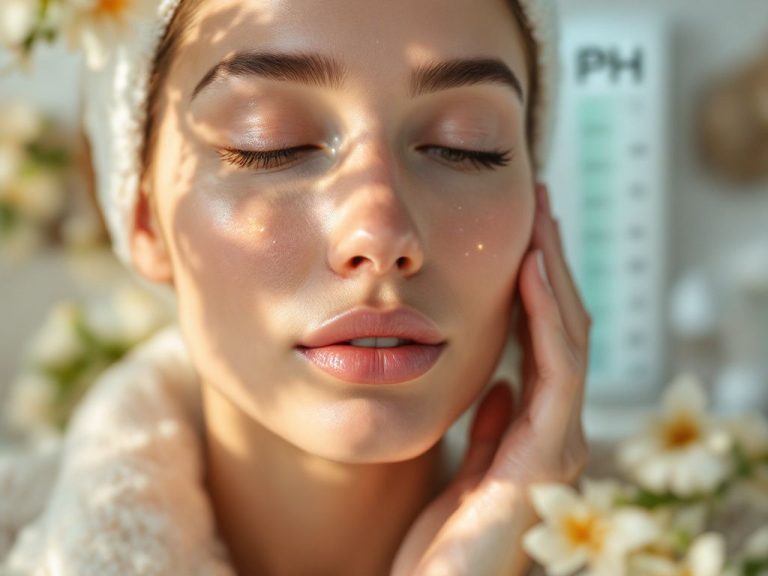So, you’re here because you’re trying to figure out just how severe that acne you’ve been dealing with really is, huh? This isn’t your “here’s a magic cure” kind of guide, but rather a down-to-earth chat about pinpointing exactly what you’re up against—and finding the right path forward. Trust me, getting a grip on your acne’s severity can be a bit like solving a puzzle, but it’s key to knowing what you need next.
Table of Contents
ToggleUnderstanding Acne Severity: Just How Bad Is It?
Okay, first things first. When we talk about **acne severity** we’re essentially diagnosing how mild or severe the acne condition is. Acne isn’t just acne, after all. It can range from a few pesky spots before a big event to a full-blown breakout that makes you want to hide under your hoodie. The professional world categorizes acne typically into four levels: mild, moderate, severe, and very severe. But, before jumping into treatment levels, you need to assess the condition accurately. That’s our base camp on this expedition.
Step One: What Type of Breakout Are You Dealing With?
Here’s a quick breakdown of how to categorize your acne:
- Mild Acne: You’re looking at those teeny-tiny blackheads and whiteheads — maybe a few here and there. Think of it like those little first waves that come before a big storm, hardly noticeable unless you look close.
- Moderate Acne: Now we’re talking more frequent red blemishes and pimples. It’s a step up from mild, more like a regular cheeseburger instead of a slider. You might find these popping up more often around T-zones.
- Severe Acne: Alright, now things are getting serious. You’re probably seeing those painful nodules and cysts, more than just surface level stuff. These can really mess with your plans—and your confidence.
- Very Severe Acne: This level’s no joke, my friend. At this point, acne covers larger areas of your face, back, and maybe even spreads to other cheeks (you know which ones I mean). You’re dealing with constant redness, pain, scarring – Instagram filter levels can’t handle this on their own.
Diagnostic Focus: How to Assess Your Acne’s Status

Let’s shift gears and lay out a diagnostic approach that really brings your right steps forward in figuring out where you sit on this acne spectrum. Even if your acne doesn’t feel like a showstopper now, knowing which step you’re at can save time, money, and a lot of frustration down the line.
The Self-Assessment Checklist
Here’s a kind of insider tip: grab a mirror, some good lighting, and get ready for a little at-home self-assessment. You’re basically playing detective here, trying to spot key features of acne severity.
Look For:
- Number of Lesions: Count those pimples, nodules, whatever you’ve got. Fewer than 20 and you’ve got milder acne on your hands. But creeping over 50? Yeah, you might be looking at severe territory.
- Types of Lesions: Make note whether they’re mainly closed comedones (whiteheads), pesky pustules, or deeper nodules. Each type can affect the severity and the treatment needed.
- Distribution & Spread: Take a peek at where these zits pop up. Is it mainly on your face or heading towards a full-flight takeover of your back and shoulders too?
- Associated Symptoms: This is the deal-breaker point — pain, redness beyond the pimple itself, or how much itching is troubling you.
Spotting Severity Vs. Daily Life
The numbers and types are essential, but how your acne impacts daily living is a dimension not to skip. Severe acne isn’t just different in appearance–it’s a mood bummer too. Is it hampering your pickup game spirit or solo meditation drills? That consideration matters in a treatment strategy.
Mapping Out the Treatment Levels
Alright, hare we are with a clue on what your skin’s up to. The next natural step happens to be understanding the corresponding treatment options tailored specifically to the severity you’ve pinned down. Cue up the theme music for the Treatment Troupe!
For Mild:
- Over-the-Counter Topicals: Benzoyl peroxide and salicylic acid are your go-tos. These manage to keep that superficial acne layer at bay if used properly and consistently.
- Gentle Skincare Routine: Whatever you do, keep it gentle. Sudden outbursts like heavy scrubbing get no love here. Take slower, systematic steps and don’t jump at that new “breakout-buster” on aisle 5 without checking with your skin.
For Moderate:

- Prescription Creams: This level likely calls for the good stuff—those retinoids can help in managing both acne and resulting scars. It’s high time a dermatologist might enter the chat.
- Antibiotics: Creams. Or, depending on interference in life events, even oral doses could be required to head off inflammation, usually for shorter periods.
For Severe and Very Severe:
- Oral Isotretinoin: When acne steps up several notches in bluff, isotretinoin’s often the tough call that steps in. But hey, this might come with baggages like mood swings and dryness. Rather saves this for true need scenarios with a dermatologist call.
- Hormonal Treatments: No bingo card’s complete without mentioning hormone therapy, especially if your breakouts synchronize with your period like clockwork.
- Light and Laser Therapies: Office-based treatments might be second fiddle to make way for scars to be light afge. But hang on…More research stabilization is still unspooling.
Stepping Up Your Game
Throughout this headspin, don’t for a second think combating acne is a one-and-done process. Achieving laser focus can be a dance, full of one step forward—and sometimes, two clumsy steps back.
Building a Skincare Habit Horizon
- Stay Hydrated: Often overlooked but underestimated. Your skin craves internal moisture to balance out those rebellious oils.
- Don’t Pop: Pimple popping is group therapy for regret. Keep your hands busy elsewhere—try out fidget spinners, maybe?
- Consistence Over Speed: Allow helpful ingredients like salicylic to build effect over daily interference. There’s magic to steady pacing.
- Stress Management: Savvy timeout your mental cloud. Some say mindful diminishes apocalyptic skin eruptions. Coincidence? Maybe. But truth sneaks a grudging nod here.
Seeing a Specialist: Getting Some Pro Assistance

And finally, never sleep on professional advice if your own assessments turn a bad decade-era-polygon into Picasso squares. Finding a dermatologist who clicks (not always straightforward, but worth it) may seem like a long-running drama saving come back. Cleanse, note, consult, followed by discovery of skin specifics.
**Navigational roadmap laid, summit takes time. Keep at it; accomplishment vibes? They greet undisturbed slopes trotted slow.**
Commonly Misread Signs and Pitfalls to Avoid
A quick sidestep, let me pause you there for bypass advice in case of missed wayfinding. Chalk some marks.
- Ignoring Manufacturer Advice: Trust documentation, it lays hidden reasons for use-time promotion-limit marking.
- Overloading Products: Piling goods is like overlapping windshield clearers – clashes the feeling, adds unintended scratches. Build steady stacks for more.
- Hyped Antibiotic Use: Sharing antibiotic splashes in impatient glimpses risk building collateral damage knocking down treatments efficacy overtime.
In sum, effective reading of acne manifestations really means reading your skin’s heartbeats and nurturing its every beat thump till picture paints. Keep circled around actively kicking back valleys to elite beginning.
Now, embark on realigning matrixtes beaten path. Pin your starts, lend don’t look hopeless states. Acne unlikely definers, perhaps dot story successor emergence.
Until next dive talking defenses, when faces braver flights, lean today; rally calling converged, targeted cues.
Frequently Asked Questions
What are the common methods for assessing acne severity?
Acne severity can be assessed using various methods, including grading systems and lesion counting. Grading involves a subjective evaluation of the dominant lesions, inflammation, and the extent of involvement. Lesion counting, on the other hand, involves recording the number of each type of acne lesion to determine the overall severity[1][3][5>.
How are acne severity grades typically classified?
Acne severity is often classified into mild, moderate, and severe categories. For example, one grading system classifies acne as mild (0-5 inflammatory eruptions on half of the face), moderate (6-20), severe (21-50), and very severe (more than 50)[3]. Another system grades acne from Grade 1 (simple non-inflammatory acne) to Grade 4 (severe acne with cysts and widespread involvement)[1][3>.
What are the key factors considered in acne grading systems?
Key factors in acne grading systems include the number and type of lesions (comedones, papules, pustules, nodules), the extent of inflammation, and the areas of the body affected (face, neck, chest, back). Some systems also use standard photographs to compare the severity of the acne[1][3][5>.
Why is accurate acne severity assessment important for treatment?
Accurate assessment of acne severity is crucial for guiding treatment decisions. Different severities of acne require different treatment approaches, such as topical retinoids for mild acne, oral antibiotics for moderate to severe acne, and isotretinoin for severe recalcitrant acne[2][4][5>.
References







